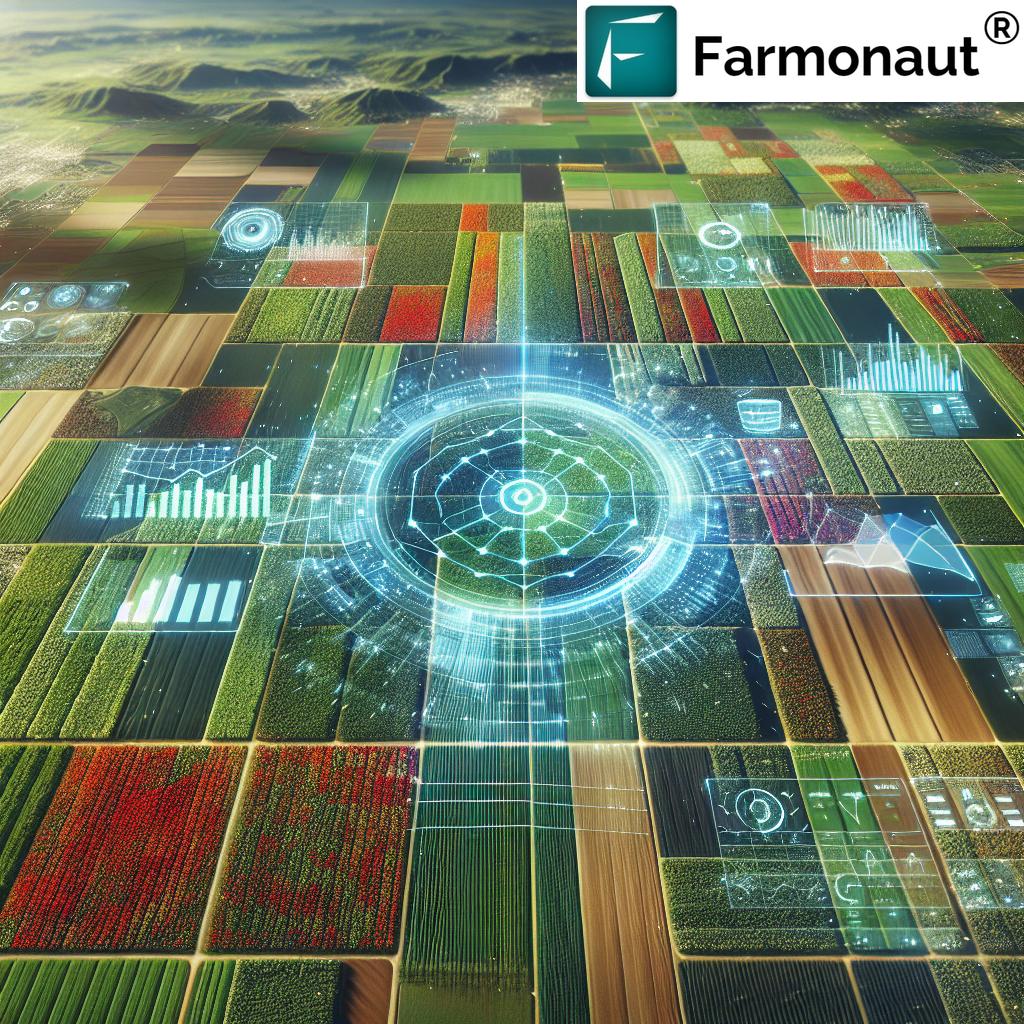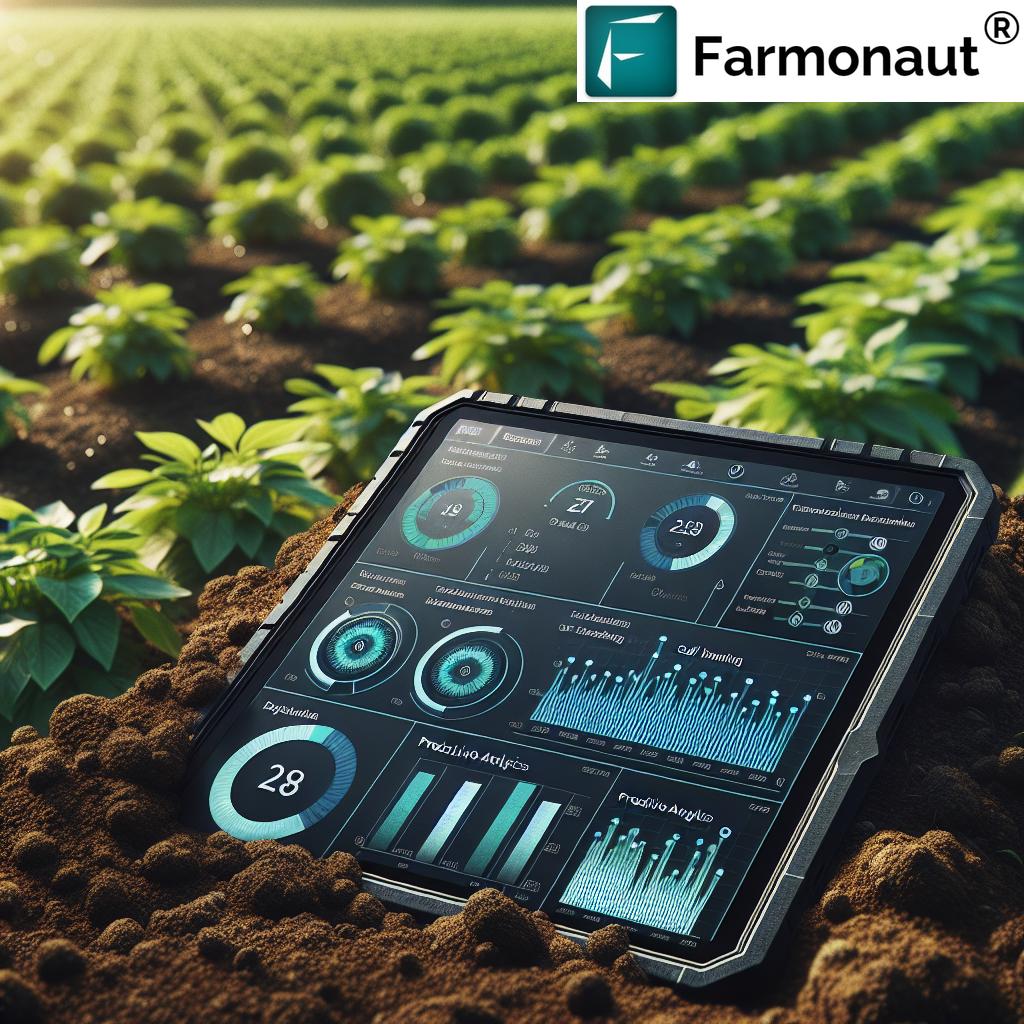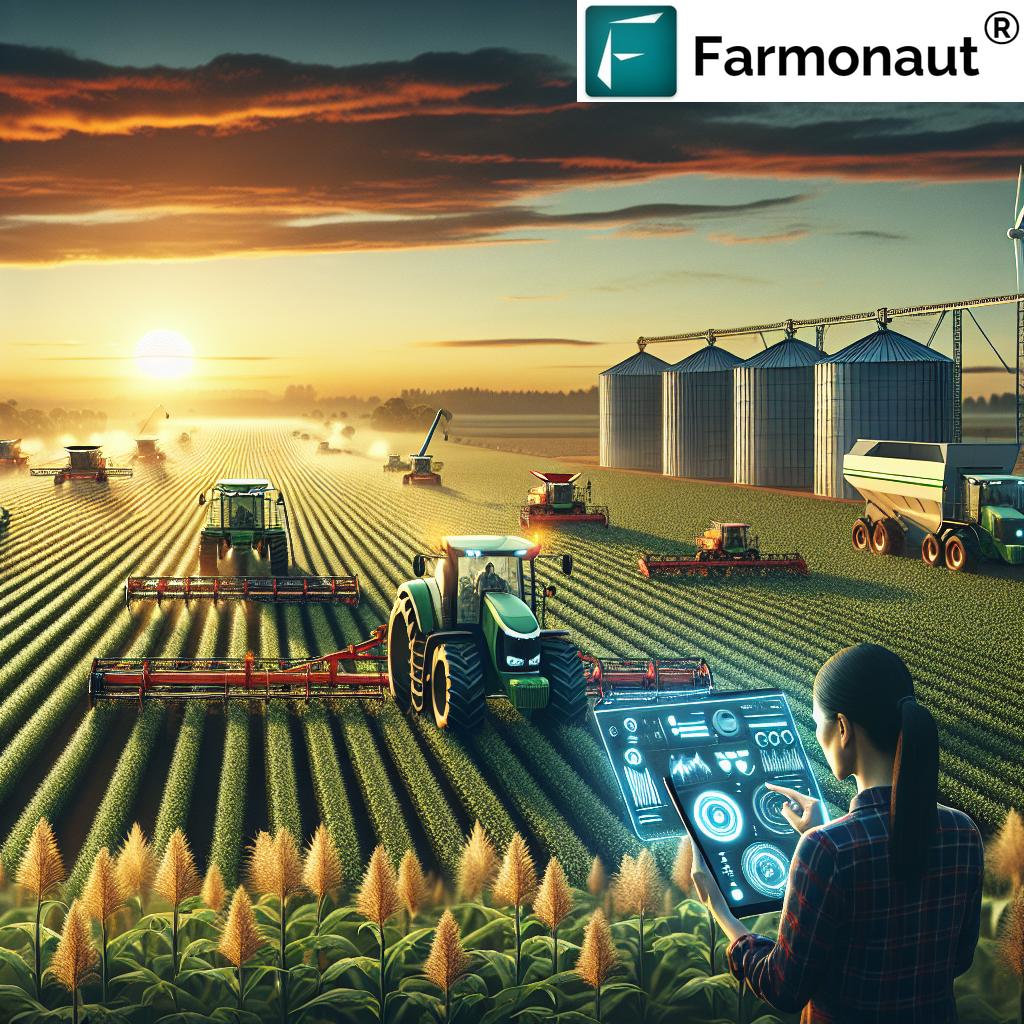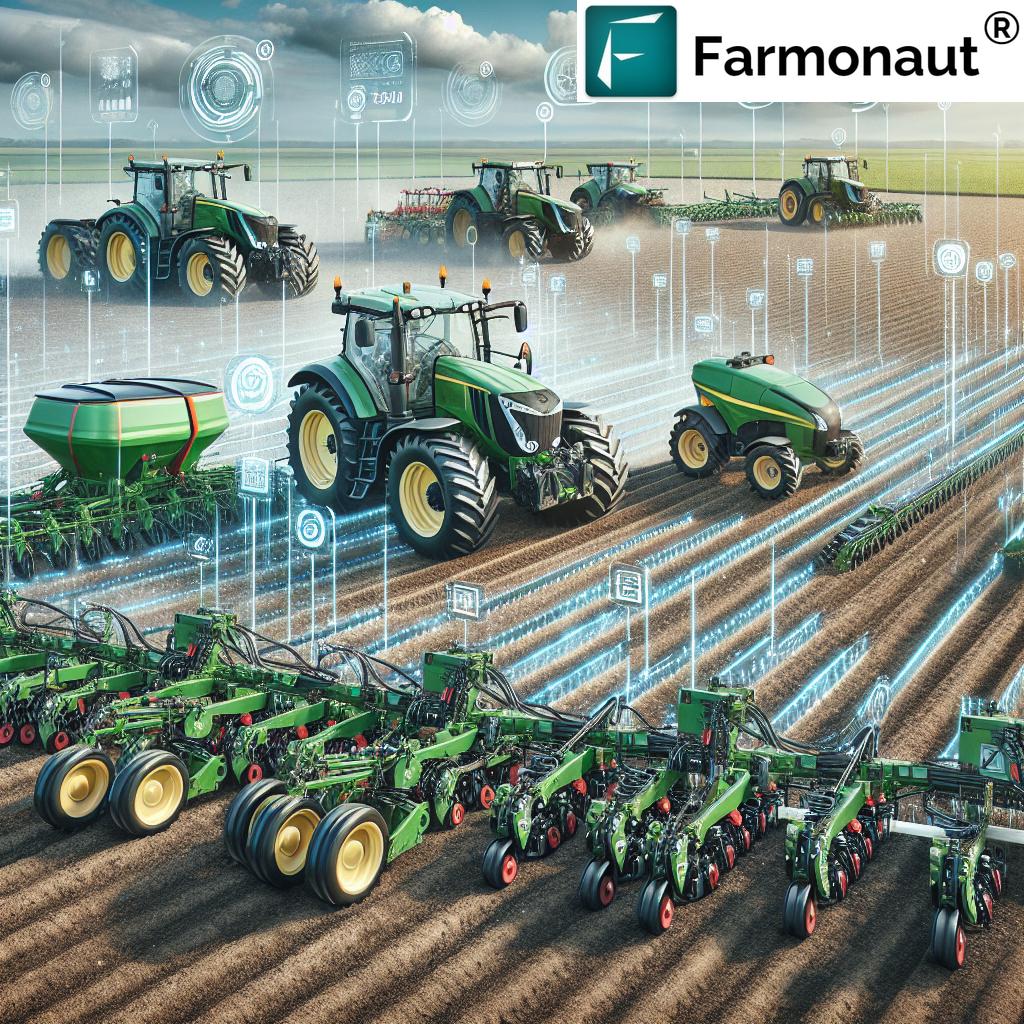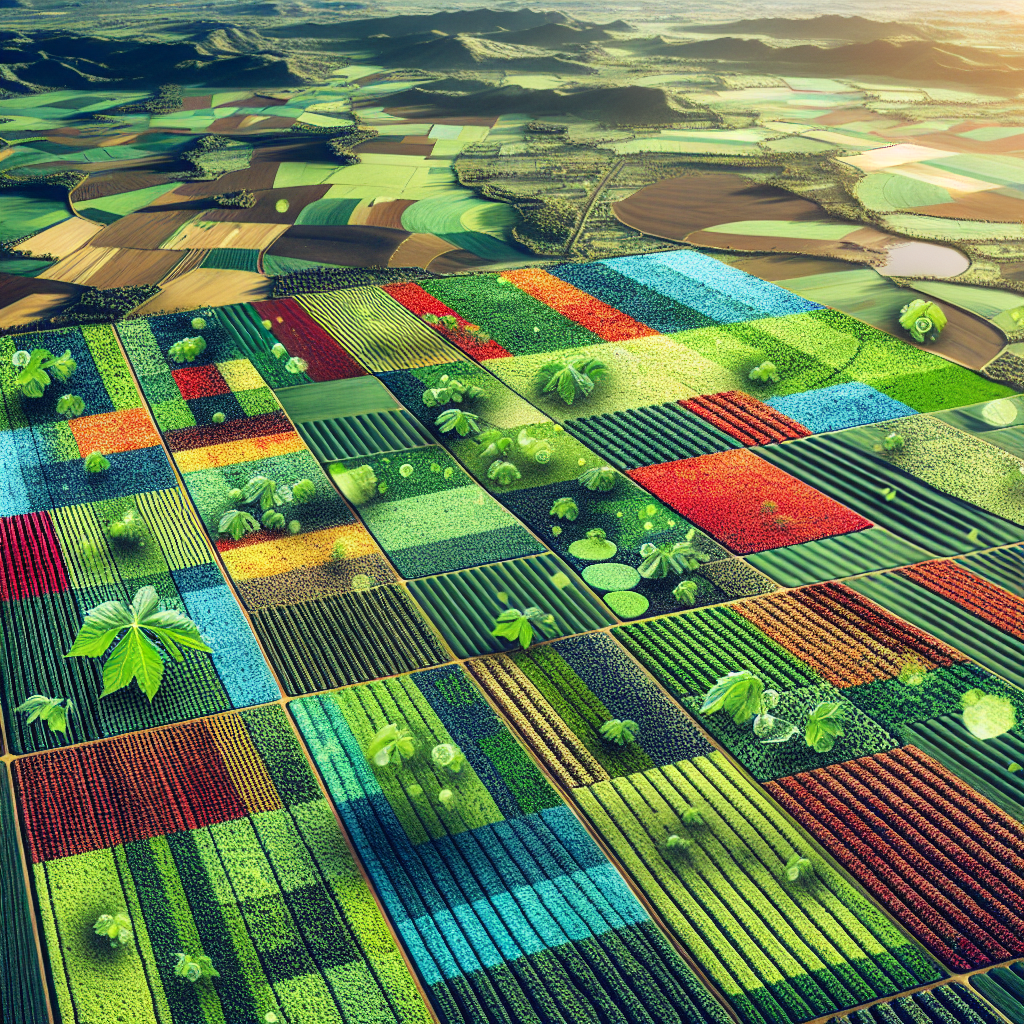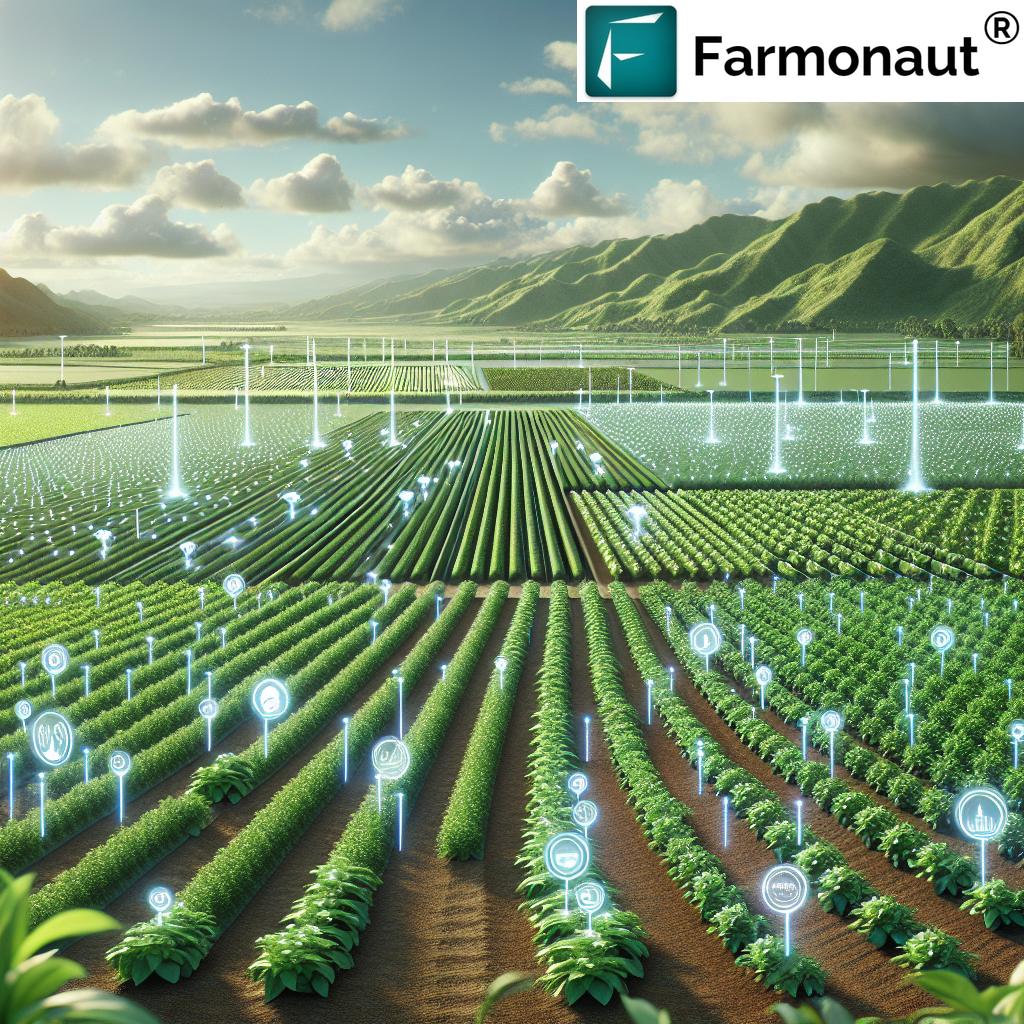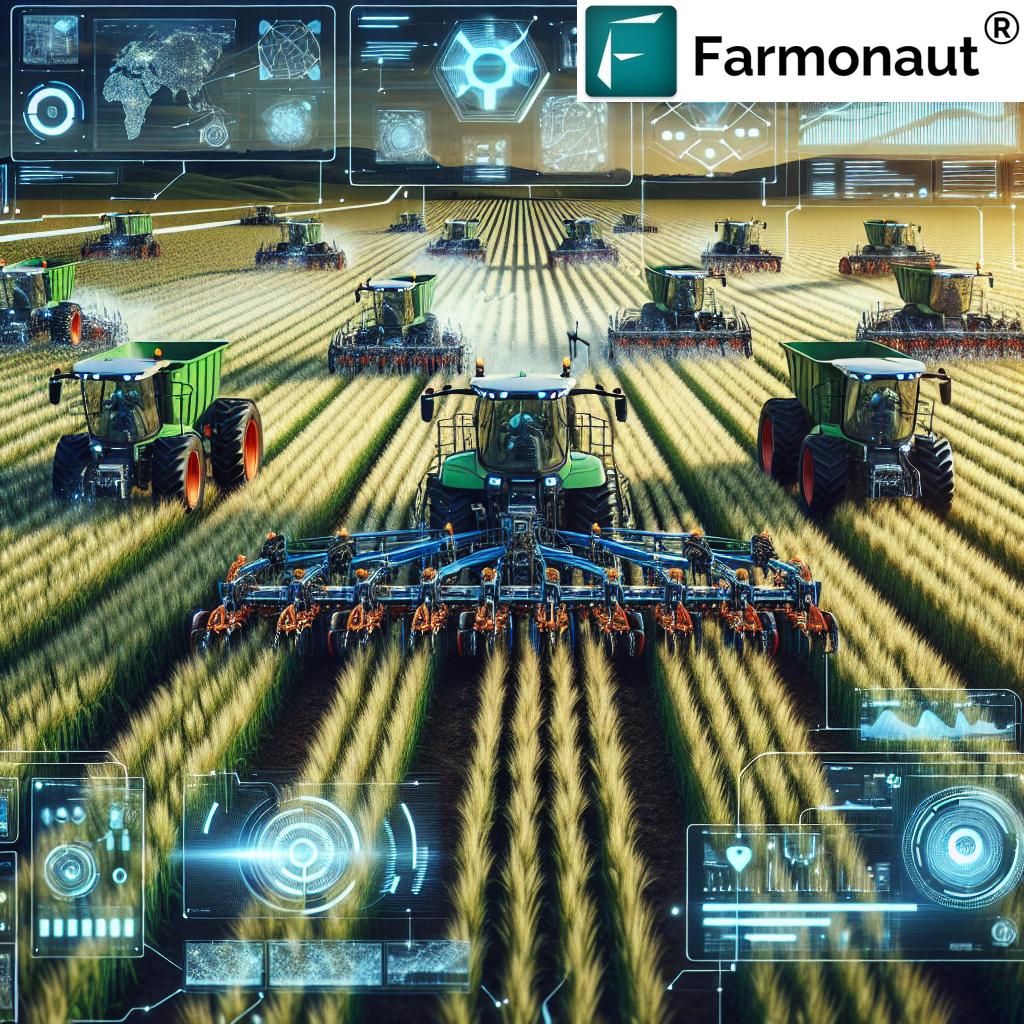Table of Contents
- Introduction: The Data-Driven Revolution in Agriculture
- Secret 1: The Power of Comprehensive Agricultural Data Collection
- Secret 2: Data Integration & Effective Management in Farm Operations
- Secret 3: Transformative Data Analysis & Interpretation Using AI
- Secret 4: Adopting Precision Agriculture Solutions for Targeted Yield
- Secret 5: Advanced Yield Prediction and Forecasting
- Secret 6: Enhancing Pest & Disease Management with Data Analytics
- Secret 7: Optimizing the Agricultural Supply Chain
- Key Technology Enablers: IoT, Drones & Satellite Imagery in Farm Analytics
- Farmonaut’s Precision Agriculture Innovation
- Comparative Impact Table: Benefits of Leading Agri Data Technologies
- Economic and Environmental Impact of Data Analytics in Agriculture
- Navigating the Challenges: Practical Solutions for Every Farm
- Future Trends in Agricultural Data Analytics
- Frequently Asked Questions
- Get Started: Farmonaut Precision Ag Tools & Subscriptions
“Data-driven farms can boost crop yields by up to 30% using advanced analytics and precision agriculture techniques.”
Agricultural Data Analytics: 7 Secrets to Massive Yields
In modern agriculture, agricultural data analytics sits at the heart of a major transformation. By systematically collecting, integrating, and analyzing information from sources such as soil, crop, weather, and markets, we unlock actionable insights that optimize yield, boost profitability, and ensure long-term sustainability.
Using innovative farm management technologies—from the Internet of Things (IoT) in farming to artificial intelligence (AI) and satellite imagery for crop monitoring—farmers and agribusinesses are empowered to manage variability, anticipate challenges, and make data-driven decisions at every stage of the agricultural process.
Unveiling the Secrets: How Analytics Delivers Actionable Insights in Modern Farming
As we delve into these 7 secrets to massive yields with data analytics, we’ll explore each core principle—showing how farm data flows from raw collection to value-generating predictions for the entire agricultural value chain. Let’s discover how every decision—from fertilizer dosage to harvest logistics—can be made smarter, faster, and more precise.
“Over 70% of top-performing farms use agricultural data analytics to optimize planting, irrigation, and fertilizer application.”
Secret 1: The Power of Comprehensive Agricultural Data Collection
The foundation of agricultural data analytics is robust, systematic data collection from diverse activities and sources. These technologies convert everyday farming into actionable, measurable data—fuel for our future success.
Types of Critical Agricultural Data
- Soil Data: Soil composition, moisture levels, and nutrient content shape every crop’s fate. IoT sensors now enable real-time soil health monitoring for dynamic, informed management.
- Weather Data: Ongoing and historical weather data reveal patterns that affect sowing, irrigation, fertilizer application, and protection from extreme conditions.
- Crop Data: Tracking growth stages, plant health, and projected crop yield enables better resource allocation from seedling to harvest.
- Market Data: Market trends, current demand, product pricing, and supply chain disruptions inform harvest strategies and reduce waste.
Modern farm operations depend on integrating these data streams—unlocking precision agriculture solutions that directly impact productivity and efficiency.
Secret 2: Data Integration & Effective Management in Farm Operations
Collecting rich farm data is only the beginning. Integration and management of silos of information are essential for success in digital agriculture. We must combine data from various sources—including weather APIs, IoT field sensors, and remote satellite imagery—into centralized systems that enable holistic, intelligent decision-making.
Integration: The Keystone of Smart Farms
- Public and Private Data Sources: For example, integration of local government weather stations, private soil moisture sensor data, and proprietary field imagery creates a more accurate model of on-ground conditions.
-
Standardized Formats: The adoption of standardized formats and APIs—such as the Farmonaut API—ensures seamless interoperability between diverse data types and analytic tools.
Developers can learn more about connecting custom analytics tools to Farmonaut’s satellite and weather data via the API Developer Docs. - Centralized Dashboards: Platforms like Farmonaut give farmers a single portal for real-time crop health monitoring, weather updates, and actionable alerts for irrigation, fertilizer scheduling, and pest risk—simplifying management across fields.
The result? Farming systems that are more responsive to real-world conditions, leading to increased efficiency and fewer resource-driven losses.
Secret 3: Transformative Data Analysis & Interpretation Using AI
Simply collecting and storing data is not enough—analyzing agricultural data with powerful computational tools is the turning point where value and insights emerge.
From Data to Decisions: AI and Predictive Analytics
- Machine Learning in Agriculture: Advanced algorithms can identify hidden patterns and correlations between environmental variables, yield results, pest outbreaks, and nutrient deficiencies—learning from historical and real-time data to generate better recommendations.
- Predictive Models: These AI-powered models forecast crop diseases, yield expectations, irrigation needs, and market demand—enabling farmers to act proactively rather than reactively.
- Interpretation Simplicity: Modern farm management platforms convert complex statistical output into visual dashboards and actionable guidance that every farmer or agribusiness can use.
This approach enables farmers, regardless of their technical background, to make informed decisions for productive, sustainable farming.
Secret 4: Adopting Precision Agriculture Solutions for Targeted Yield
The fourth secret lies in precision agriculture solutions—applying tailored interventions that maximize resource efficiency and yield while protecting the environment.
- Site-Specific Field Management: With satellite imagery for crop monitoring, IoT sensors, and drones, farmers can detect intra-field variability and address specific soil, pest, or moisture anomalies with pinpoint accuracy.
- Variable Rate Application: Inputs like water, fertilizers, and pesticides are applied only where and when needed, cutting costs and reducing waste—essential for both profitability and environmental stewardship.
- Automation: Automation further enhances efficiency in field operations, from tractor-guided seeding to drone-based spraying for pests and diseases.
Precision approaches are making sustainable agriculture practices achievable at scale by blending technology with time-tested farming wisdom.
Interested in maximizing resource savings and minimizing environmental impact on your farm? Explore Farmonaut’s Carbon Footprinting tool—track, analyze, and manage your farm’s carbon emissions and take steps toward true sustainability.
Secret 5: Advanced Yield Prediction and Forecasting
Crop yield prediction is one of the most exciting—and impactful—outcomes of agricultural data analytics. By analyzing multi-year, multi-source datasets, we can estimate future yields with much greater accuracy than ever before.
Key Applications:
- Using historical weather patterns, soil health data, and current crop growth markers to drive more reliable production projections
- Supporting farm management choices for planting, fertilization, and harvest scheduling based on predicted outcomes
- Enabling smarter market planning and risk management for both individual farmers and large agribusinesses
AI-empowered modeling transforms raw data into practical advice, giving every farm a competitive edge.
Secret 6: Enhancing Pest & Disease Management with Data Analytics
Early detection and intervention are critical to limit pest and disease impacts on crop yields. Modern platforms use a combination of sensors, drones, and satellite imagery to monitor for anomalies and evolving threats in real time.
- Machine learning algorithms analyze patterns in multispectral imagery and ground sensor data to flag potential issues—even before visual symptoms appear
- Automated alerts prompt proactive action to mitigate infestations, from targeted pesticide applications to adjusting irrigation to deter fungal diseases
The result? Healthier plants, higher yields, and minimized input costs.
Farmonaut’s Crop Plantation & Forest Advisory delivers personalized, AI-guided management advice—including pest and disease alerts, irrigation optimization, and resource-saving strategies—in real time for every field, crop, and farm scale.
Secret 7: Optimizing the Agricultural Supply Chain
Supply chain optimization is crucial for getting farm products from field to market efficiently. Agricultural data analytics provide real-time insights into production levels, transportation logistics, storage conditions, and market demand, helping avoid bottlenecks and waste.
- Fleet & Resource Management: Digital tools help optimize vehicle routes, adjust storage allocations, and ensure prompt, monitored delivery while cutting operational costs and environmental impact.
- Blockchain-Based Traceability: With Farmonaut’s blockchain traceability solution, every stage—farm to silo to shop—can be transparently tracked, with trusted data improving food safety, authenticity, and supply chain resilience.
These innovations help all actors in the agri-supply chain reduce food waste, lower emissions, and better fulfill market demand.
Streamline logistics, increase traceability, and cut costs with Farmonaut’s Fleet & Resource Management tools — designed for both individual farmers and large agribusinesses.
Key Technology Enablers: IoT, Drones & Satellite Imagery in Farm Analytics
At the backbone of data-driven agriculture sit groundbreaking technologies that make in-depth analysis possible even for remote or resource-limited farms:
- IoT in Farming: Internet of Things (IoT) sensors offer instant feedback on soil moisture, nutrients, and microclimatic conditions. Remote monitoring helps apply resources (like water and fertilizers) exactly when and where needed—eliminating guesswork.
- Drones and Satellite Imagery: Unmanned aerial vehicles (UAVs) and satellites routinely capture multispectral images over large fields, identifying variability in plant health, pest infestation, and drought stress. This data is critical for precision agriculture solutions and crop health monitoring across vast areas.
- Artificial Intelligence and Machine Learning: These technologies power the analytical core—processing millions of data points from agronomic operations and recommending actionable interventions.
- Big Data Platforms: Cloud-enabled analytics platforms (like Farmonaut) offer secure, scalable storage and real-time dashboards, making even the most advanced insights accessible from any device.
These technological enablers ensure that analytics is not a luxury, but a practical reality for farms of every size in every geography.
Large estates and contract farming operations can benefit from comprehensive, scalable solutions with Farmonaut’s Large Scale Farm Management app, unlocking integrable analytics for fields of any size.
Farmonaut’s Precision Agriculture Innovation
As pioneers in agricultural technology, Farmonaut delivers end-to-end, satellite-driven farm management technologies for farmers, agribusinesses, governments, and corporates worldwide. Our value proposition centers on making precision agriculture affordable and accessible to all, regardless of the field size or experience level.
-
Satellite-Based Crop Health Monitoring:
We leverage multispectral satellite imagery for real-time crop health monitoring—tracking NDVI, soil moisture, and anomalies that require attention. -
Jeevn AI Advisory System:
Our AI-driven platform analyzes remote sensing and weather data to produce personalized nutrition, irrigation, and management strategies for every farm. -
Blockchain-Based Traceability:
For supply chain transparency in food, textiles, and more. Every stage is tracked, verified, and trusted. -
Resource Management:
Optimize labor, logistics, and inputs with real-time dashboards for cost and emissions reduction.
Our tools are available on the Farmonaut web and mobile apps, and also via API for developers and agri-enterprises. We support sustainable agriculture practices globally, lowering costs and barriers to advanced analytics for every field.
Ready to transform your farm? Get started with Farmonaut’s app today!
Comparative Impact Table: Leading Agricultural Data Analytics Technologies
| Technology/Method | Estimated Yield Increase (%) | Resource Savings (%) | Environmental Impact Reduction (%) | Adoption Rate (%) |
|---|---|---|---|---|
| Satellite Imagery for Crop Monitoring | 8-15 | 10-30 | 15-30 | 45 |
| IoT Sensors (Soil, Moisture, Weather) | 5-12 | 20-35 | 18-32 | 38 |
| Predictive Analytics (AI/Machine Learning) | 12-20 | 18-25 | 21-27 | 42 |
| Precision Resource Application (Variable-Rate Tech) | 7-15 | 30-45 | 23-38 | 26 |
| Blockchain-Based Supply Chain Traceability | 4-7 | 12-20 | 10-18 | 9 |
These metrics are based on aggregated estimates from published research, expert surveys, and adoption statistics in global precision agriculture. Benefit ranges may vary by crop, geography, and farm size.
Economic and Environmental Impact of Data Analytics in Agriculture
Adopting agricultural data analytics generates substantial economic and environmental value:
- Reduced Input Costs: Precise use of water, fertilizers, and pesticides lowers direct costs and maximizes returns, even as resource prices and climate variability rise.
- Increased Productivity: Farms using these systems see yield improvements of 8-20% on average, depending on technology and crop type.
- Labor Efficiency: By aligning tasks with predictive insights—like harvest timing or irrigation—labor costs drop significantly.
- Environmental Stewardship: Smarter input application protects soil health, reduces nutrient runoff, and maintains long-term field fertility.
- Market Resilience: Reliable supply chain optimization ensures products reach consumers with reduced spoilage and waste, supporting global food security.
Farmonaut’s tools support each of these outcomes at a fraction of the cost of legacy technology, making data-driven farming the new global standard.
Navigating the Challenges: Practical Solutions for Every Farm
Common Challenges in Implementing Data Analytics and Farm Management Technologies
-
Data Integration Complexity:
Farm data comes in countless formats from field-level sensors, satellite platforms, and legacy farm records. Solutions: Standardized APIs and user-friendly import tools help connect and align disparate data streams for centralized analysis. -
Connectivity Limitations in Rural Areas:
Some farm sites have unreliable internet connectivity. Solutions: Edge-computing tools process data offline and sync once connectivity is restored, ensuring analytics capabilities even in remote fields. -
Knowledge and Skills Gaps:
Advanced analytics may seem overwhelming. Solutions: Modern platforms prioritize visualization, automation, and mobile-first interfaces. Farmonaut’s simple yet powerful dashboards bring actionable recommendations directly to users—no data science degree required.
Frequently Asked Questions (FAQ)
-
What is agricultural data analytics?
Agricultural data analytics refers to the systematic process of collecting, integrating, and analyzing data from various agricultural activities—including soil, crop, weather, and market information—to generate actionable insights that improve farm decision-making, increase yield, and enhance sustainability. -
How does IoT benefit farming?
IoT in farming uses interconnected sensors to constantly monitor conditions such as soil moisture, nutrient content, and climate. This data empowers farmers to precisely manage inputs, optimize irrigation, and quickly respond to stress factors—boosting yield and resource efficiency. -
What does “precision agriculture” mean?
Precision agriculture is an approach that manages soil and crop variability within fields, applying resources (water, fertilizer, pesticides) precisely where needed. It leverages technologies such as satellite imagery, drones, and AI-powered analysis to drive efficiency and sustainability. -
What makes Farmonaut different from other platforms?
Farmonaut stands out by delivering affordable satellite-based crop monitoring, AI-driven management recommendations, blockchain traceability, and scalable resource management—all accessible via intuitive apps and APIs. We make precision agriculture tools accessible regardless of farm size or technical expertise. -
Can Farmonaut help with crop loans and insurance?
Yes, with Farmonaut’s Crop Loan & Insurance tools, financial institutions can verify fields and crop status remotely for streamlined loan disbursement and insurance claim validation, reducing fraud and improving access to finance for farmers. -
Is Farmonaut suitable for smallholder or large-scale farms?
Absolutely! Our modular, scalable platforms are tailored to serve individual farmers, cooperatives, large agribusinesses, government programs, and corporate supply chains. -
Are Farmonaut’s services accessible without expensive hardware?
Yes—our satellite-based model eliminates the need for on-field hardware, reducing cost barriers and making advanced analytics available to all.
Future Trends in Agricultural Data Analytics
The future of agricultural data analytics is bright. With rapid technological advancements in AI, machine learning, and IoT in farming, farmers will continue to gain deeper insights. Some key trends on the horizon:
- Blockchain Integration: Enhances data security and trust in agricultural supply chains, with provenance and authenticity built into every batch of food, fiber, or raw product.
- Affordable IoT Sensors: As prices drop, even small-scale farmers will benefit from soil and plant health monitoring at the micro level.
- Hyperlocal Weather and Soil Prediction: AI-driven models will integrate climate data, field topography, and microclimate trends for minute-by-minute, plot-by-plot recommendations.
- Universal Accessibility: Cloud platforms like Farmonaut’s are making powerful analytics tools accessible worldwide—advancing global sustainability and productivity.
Embracing these trends will be key for every agricultural sector stakeholder—not just for higher yields, but to meet the challenges of population growth, climate variability, and market volatility.
Get Started: Farmonaut Precision Ag Tools & Subscriptions
Ready to revolutionize your farm with cutting-edge agricultural data analytics?
Farmonaut offers subscription-based services built to scale: from small family plots to agri-enterprises and government programs. Access the world’s leading satellite-driven crop health monitoring, farm management, traceability, and AI-driven advisory all from your phone, browser, or API.
- Accessible via Android, iOS, and web browser—plus direct API access for developers and researchers.
- Flexible plans for every farm size and budget.
- See instant impact on yield, resource use, and sustainability.
Your path to data-driven yields and sustainable farming starts now. Join thousands of smart farmers and agribusinesses leveraging Farmonaut’s technology for a better agricultural future.

